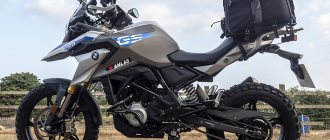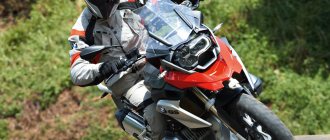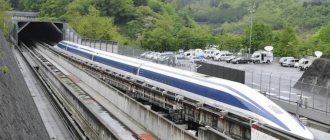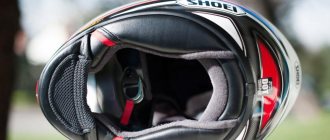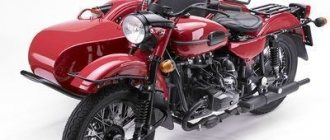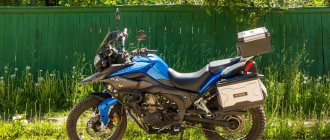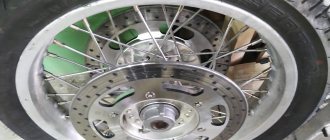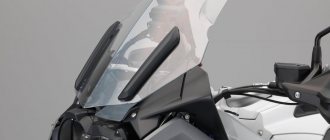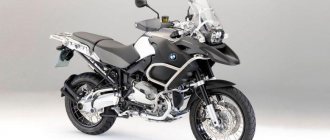BMW F700GS
Model class : touring enduro.
Years of production/sales : 2012-
The BMW F700GS was introduced in 2012 as a replacement for the BMW F650GS (2008-2012). Compared to its predecessor, the updated model has received a number of improvements and has become even more similar to the F800GS:
- Minor visual changes to the plastic;
- Engine power increases from 71 to 75 hp. (torque from 75 to 77 Nm);
- Single disc front brakes are replaced by dual discs with ABS as standard;
- Electronically adjustable rear suspension and stabilization systems - ESA and ASC - are available as options.
The main features of the BMW F700GS include a steel frame, long-travel suspension (travel - 170 mm) in the form of a conventional telescopic fork at the front and a monoshock absorber at the rear, 19' and 17' wheels, a 16-liter fuel tank and 209 kg curb weight.
BMW's motorcycle policy is such that most models of the same series are very similar to each other and may seem almost the same to most. For example, motorcycles F650GS (2008-2012), F700GS and F800GS. Despite their visual similarities, the F650GS and F700GS are fundamentally different from the F800GS. The first ones are cheaper, have a less forced engine and are intended primarily for asphalt. The second is a more expensive model, boosted to 84 hp. engine and is equipped with a chassis for primary use on bad roads (spoked wheels, large 21' front wheel, inverted fork, etc.). Therefore, when choosing a modern BMW F-series motorcycle, you need to focus not on the price of a specific model, but on what tasks you need to solve.
For example, for city driving the F700GS will be more preferable and convenient than the more expensive F800GS.
In the shadow
Mid-sized touring enduros are not the most popular class. While the older models, the pop stars of the motorcycle industry, are always in the public eye and embody the latest technology, the simpler motorcycles are in their shadow. At the same time, in modern times, serious prospects are opening up for budget technology. “Motoexpert” compared the two most powerful representatives of the class, the BMW F 700 GS and the Suzuki DL650 V-Strom.
BMW F 700GS
The F 700 GS is a strange motorcycle, even from the concept itself. It was prepared as a replacement for the single-cylinder 650 cc “Goose”, but for some reason they decided to install the engine from the “eight hundred”. Which is not only larger in volume, but also there is a clear excess of cylinders. Weight, size and difficulty in maintenance were added compared to its predecessor, but the main advantage for which such sacrifices were made was removed.
Since the “seven hundred” is an entry-level motorcycle, a dozen horsepower was cut off from the engine. The result was greater than that of the F 650, but there is still a feeling of some senselessness of this procedure. Why do less when the engine is already not distinguished by beastly power - the question is more likely for marketers than for designers. There were no obvious advantages at low speeds: it pulls well, but nothing more.
At the same time, low speeds are the main operating range of the engine. Because, despite the depowering, he also inherited another family feature, an unpleasant small vibration that spreads through the palms and feet throughout the body and forces him to turn up the gear. In general, the engine really turned out to be new. Soft, obedient, including on the ground, where this power is more than enough, but if you have been driving for several seasons and love asphalt, such characteristics will be boring.
The chassis is also the fruit of compromises. Although here it is more clear: the use of not too complex components makes the design more affordable in terms of price. Cast wheels, a simple fork without any adjustments - everything looks very budget-friendly and feels like it while driving. The suspension works very softly. For the city - excessively. While the rear can be adjusted using an optional electronic system, the front fails under braking and sways in corners without any hope of correction, unless, of course, you interfere with the design. But the brakes work very well. They are very tenacious, and the moment of blocking is felt even before the ABS begins to chirp.
Cast wheels with asphalt tires transparently hint that the abbreviation in the name, although it contains the letters GS, but “Strasse” is much more appropriate in it than “Gelland”. You can quickly drive along dirt roads or simple off-road terrain on a motorcycle. But we love the GS series for its ability to get into some serious mud or blast through dry conditions. And with this the “seven hundred” is already starting to have problems. The suspension wobbles, the tires slip, the whole motorcycle rattles and knocks, as if the fasteners are not tightened properly.
What the F 700 GS really does well is travel. On a long straight road, when you don’t have to brake hard and turn quickly, the soft suspension turns into a big plus, thanks to which the body feels fresh even after many hours of driving. The ergonomics are also quite touristy. Here the junior GS is not much different from the older ones, except that there is a little less space behind the wheel. In this regard, the F 700 GS is an excellent solution for girls and men who do not have an outstanding physique. Reaching your feet to the ground is no problem and this makes the bike even easier to use.
Suzuki DL650A V-Strom
Suzuki developed its formula for medium-sized touring enduro in 2004 and has been using it with minimal changes since then. The current V-Strom 650 is only the second generation in 12 years, and not too radically different from the first. A particularly striking greeting from the past, and even more distant, is the quality of manufacturing of individual parts. Especially those that are in front of the driver’s eyes and constantly remind of themselves with greetings from the 80s. The remote controls, mirrors, and key seem to have been borrowed from experimental military equipment from the Cold War. Although, perhaps, for some, this interface will not be a drawback, but a special feature, a stylistic refinement on a military-retro theme, adding some brutality to the motorcycle.
The motorcycle as a whole gives the impression of being difficult to kill. It’s as if it appeared not in an era of universal relief, refinement and disposability, but in the glorious years when technology was heavy, but strong and repairable. Although, if you look closely, it is not so simple at all. Spoke wheels are tubeless. In addition to speed and mileage, the liquid crystal “tidy” shows a lot of interesting information. True, some of the necessary data appears only after a long game of “guess the button,” because it is impossible to intuitively understand the logic of changing virtual screens with the high beam flashing button.
Also, a strange logic can be seen in the engine settings. The good thing about a regular low-boost V-Twin is that most of its power comes at low revs. Here, all the most interesting things went under the red zone, like on some racing Ducati. To feel the acceleration, you need to twist the throttle properly, and then the V-Strom will drive even better than it should according to the canons of the class. True, one of its trump cards, fuel efficiency, will be irrelevant in this case; when driving fast, the “ström” drains a fairly large tank at a mind-boggling speed, almost like the aforementioned Ducati on the race track. True, the brakes are not at all conducive to fast driving. It often happens that the front calipers are not powerful enough, but here they also add disgusting feedback, which is practically non-existent. And when pressed, the handle springs unpleasantly, as if you feel the rubber hoses first inflate, and then compress and squeeze the brake fluid back into the master cylinder. Well, there is ABS, with which you don’t have to worry about unexpected blocking, but just push with all your might.
The suspension is made in full accordance with traditions, not at all racing. So unracing that even with such brakes the front end dives so much that you almost touch the ground with your helmet visor. The rear one has remote preload adjustment, which can be adjusted to more or less normal behavior. But on a bad road it is very comfortable to drive on a soft suspension, especially when you travel far. In general, the V-Strom 650 is primarily a touring motorcycle. The glass is high, the seat is wide and soft, the tank is large, it lasts a long time if the engine does not need to be cranked hard. And city riding is already a compromise for those who do not have the opportunity to keep two motorcycles.
Sparring
The difference between the two motorcycles is already evident from their history. The V-Strom 650 has been in production for over ten years and is an established and popular model that sells well around the world. The F 700 GS is a not very successful fruit of marketing efforts, hiding in the shadow of the more respectable older members of the family. Moreover, he hid so much that he is practically invisible on Russian roads.
There are a number of points in assessing motorcycles that are not obvious to everyone. For example, that there are quite a lot of people in the world who are not tall and have long legs. And these people have big problems choosing big enduros. At times they are so serious that, having fallen on their side several times when stopping in an inconvenient place, they have to abandon this class of motorcycles and switch to something more compact. For such people, BMW has provided the opportunity to order a lowered seat and even a lowered suspension directly from the dealer. In the latter version, the saddle height is 765 mm, even lower than that of the reference Yamaha YBR125 small-capacity training bike. And in the default configuration you sit quite low. And even if you are taller than average, you have to climb onto the V-Strom with your leg raised high. And it is precisely for this reason that you don’t want to stop there often, but you want to sit behind the wheel. In terms of ergonomics, manufacturers have changed places. The Bavarians made a motorcycle in an Asian style, not too spacious, but on the V-Strom you sit like a European, without shrinking, with outstretched arms and a relaxed body.
The opposite happened with motors. The inline-two loves to drive at low revs. There is noticeably more peak power, but it is problematic to use due to vibrations. You have to drive “on the moment”, as V-shapes usually do. And the V-Strom is completely dull from below, so for joy and fun you have to keep the gear lower and not spare the gas. But in general, the Suzuki engine, of course, loses, which is not surprising given the significant difference in displacement.
The situation with the suspension is similar. In both cases, the front part is designed primarily for straight-line movement with a minimum of maneuvers, so sharp braking and fast turns are not for it. The shock absorber in both cases is adjustable without the use of special tools. On the F 800 GS - electronically, on the DL650 - using a remote mechanism. In this way, the rear section can be adapted to accommodate passengers and luggage, and also make active driving a little more pleasant. On a global scale, the BMW is more agile, the Suzuki is better suited for straight-line driving. In terms of brakes, the Bavarians beat the Japanese with a huge advantage: in order not to feel like a kamikaze pilot with a one-way ticket, the owner of a V-Strom will have to do something with them, at least experiment with the pads.
Although both motorcycles belong to the enduro class, their off-road capabilities are modest even by the standards of large touring machines. The wheels in both are 19-17 in size, that is, something between purely asphalt and purely dirt, and the ride is just as average. That is, it is possible, but carefully. The V-Strom looks more off-road thanks to the spoked wheels, but in practice the GS is a little more comfortable on the ground due to the low-end engine and low seat, which allows you to secure yourself with your legs. Yes, these are not the motorcycles on which it is recommended to take turns sideways in a beautiful Dakar stance. Here it is better to put your foot on the ground once again, since falling on such equipment is painful, and repairing it is difficult and expensive.
Motorcycles of this size are usually designed for beginners, who should feel comfortable and safe on them. This fully applies to the GS: it is compact, low and light, the engine operates in a more friendly range, so the motorcycle is very easy to handle. That is why, by the way, it is used in the driving school of the Russian BMW representative office. It’s not very easy to even sit on the V-Strom, and the features of the engine and chassis require the driver not only to be of average height or above, but also to have some driving experience. It is less versatile; first of all, it is good for traveling, and everything else is an add-on that requires some effort. The scope of application of the F 700 GS is somewhat wider with one caveat: there is a high chance that those who bought it for the first two-wheeled steps will get tired of this softness and friendliness after the first season.
For the provided Suzuki V-Strom motorcycle, we thank the Russian representative office of Suzuki, www.suzuki-motor.ru
For the provided BMW F 700 GS motorcycle, we thank, www.bmw-motorrad.ru Lyulaki-bab > May 30, 2021 10:57 Nikolay Bogomolov
Specifications
Technical characteristics of BMW F700GS:
| Model | BMW F700GS |
| Motorcycle type | touring enduro |
| Year of issue | 2012- |
| Frame | steel tubular |
| engine's type | 2-cylinder 4-stroke in-line |
| Working volume | 798 cc |
| Bore x Stroke | 82x75.6 mm |
| Compression ratio | 12.0:1 |
| Cooling | liquid |
| Number of valves | DOHC, 4 valves per cylinder |
| Fuel supply system | injector |
| Ignition type | digital |
| Maximum power | 75 hp at 7300 rpm |
| Maximum torque | 77 Nm at 5300 rpm |
| Transmission | 6-speed |
| type of drive | chain |
| Front tire size | 110/80-19 |
| Rear tire size | 140/80-17 |
| Front brakes | 2 discs, 300 mm, 2-piston calipers (ABS) |
| Rear brakes | 1 disc, 265 mm, 1-piston caliper (ABS) |
| Front suspension | 41 mm telescopic fork, travel - 170 mm (140 mm - lowered suspension) |
| Rear suspension | pendulum with monoshock absorber (adjustable preload and rebound), travel - 170 mm (135 mm - lowered suspension) |
| Overall dimensions (LxWxH) | 2280x880x1215 mm |
| Seat height | 820 mm (790 mm with low saddle, 765 mm with lowered suspension, 835 mm with comfort saddle) |
| Wheelbase | 1562 mm |
| Gas tank capacity | 16 l |
| Maximum speed | 192 km/h |
| Acceleration to 100 km/h (0-100) | 4.3 sec |
| Motorcycle weight (curb) | 209 kg |
